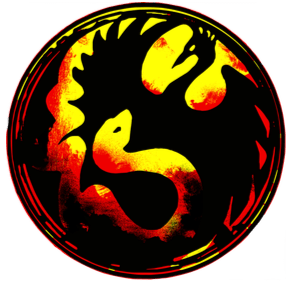My Thoughts on Wing Chun
Wing Chun is an art form that is not getting it’s just due in the martial arts world. Most are enamored at the skilled fighting of Ip Man in the self-titled movies. However, the work involved in becoming a well-rounded Wing Chun practitioner takes consistent dedication to the art.

Foundation
The basis behind Wing Chun is protecting one’s center-line and while aggressively attacking with punches (or kicks). While chain punches seem to be the most famous of Wing Chun’s attacks, our attacks are more than just a flurry of punches. Under my sifu’s instruction, we incorporate upper cuts, hooks, jabs and various other punches while protecting the center-line.
Although, traditional Wing Chun is primarily a stand up art, it can be susceptible to other arts that train on ground techniques. One thing that we train on is no gi jiu-jitsu techniques. These techniques involve scenarios on how to fight one’s way to a standing position when being taken to the ground.
We believe and train to stay within the principles and structure of Wing Chun. Any attack is fair game to use in self-defense and combat scenarios. I believe these are the same principles set forth by the modern day father of Wing Chun, Ip Man.
Ip Man
Ip Man’s lineage can be traced to the Shaolin temple and the abbess, Ng Mui. This lineage is almost 400 hundred years old and rich in history. Many great masters can trace their lineage to Ip Man. Subsequently, there have been many famous practitioners who’ve trained under Ip Man. Other than his sons, Ip Ching and Ip Chun, other notable students under Ip Man include Wong Shun Leung, Hawkins Cheung, Moy Yat and even Bruce Lee.
With any martial art, there are different branches that evolve from the main tree. These branches have the same central idea of self-defense but differ on what techniques are most important to train on a consistent basis. This is the same for Wing Chun.
Ip Man had many students who took what they felt was the most important idea in learning Wing Chun. One branch of Wing Chun may focus primarily on chi sao. Another branch may focus on the meditative parts found within our forms. One branch may focus on how to spar with the techniques found in both chi sao and the forms.
Curriculum
Our grading system is rather simple and redundant in it’s approach to attain proficiency. This helps weed out any weaknesses one may have. Sifu Och’s curriculum involves planes of development that helps students develop muscle memory and fast reactions in a confrontation. This type of reaction is possible after training consistently for at least a year. Even still, we do not believe in passing for the sake of obtaining a belt. One has to earn it and show consistent progress not on in training but in testing.
The curriculum is comprehensive yet nothing is set in stone. This is because my sifu makes it a point to travel to other masters in Wing Chun for his own personal development. Just recently he trained under Ip Chun in Hong Kong and also continued his training under the Wong Shun Leung lineage with David Peterson in Malaysia.
I have reached the 1st Level Advanced Instructor (red sash) in over 8 years of training. I have been at this level for 2 years and now, under my sifu’s guidance, focus more on teaching the art form as my sifu has taught me.
Even though I am busy with teaching my own students, I do train at least once a week with my sifu. My next level will red & black sash, which is a 2nd Level Instructor. After that will be my black sash. Even then, I will continue to train to improve my craft and impart that knowledge to future students of mine.
Book Your 2 week Free Trial TODAY!
Click here to schedule Your Appointment or FILL OUT the form for more information.

